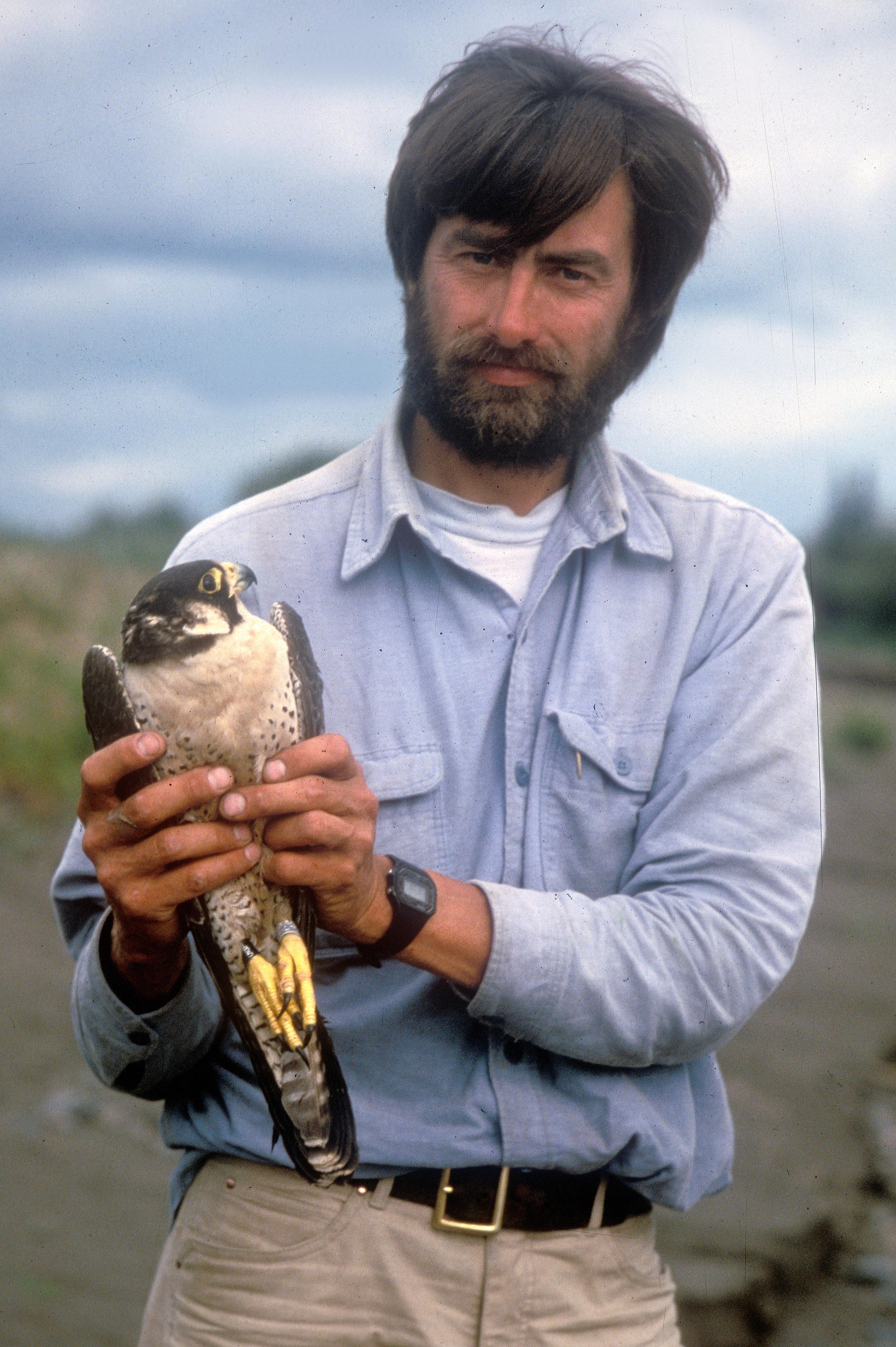




Population of Yukon River peregrines nosedives
Numbers of adult peregrine falcons on the upper Yukon River in Alaska have decreased by more than a third in the last three years, according to a scientist who has counted them there for half a century.
Skip Ambrose is a biologist who has observed Yukon River peregrine falcons since 1973, missing only three years along the way.
He and his wife Chris Florian returned from 2023’s trip having seen only 77 adult peregrine falcons in the 166-mile stretch from the Yukon border to Circle. That is a 34 percent decrease in the average number of adult birds they counted there from 2012-2019.
“Normally, we have 58-to-60 nesting pairs and one or two single adults along the upper Yukon,” Ambrose said. “In 2023, we had 33 pairs and 11 single adults.”
The population decrease comes after decades of peregrine falcons’ recovery from the effects of DDT, a compound introduced in 1947 to kill mosquitoes and other insects.
In 1973, the Environmental Protection Agency banned the use of DDT, which, when ingested by falcons, caused them to lay eggs with thinner shells that often broke.
In the decades since the DDT ban in the U.S. and other countries, peregrine falcons came back.
Ambrose thinks the population of peregrines stabilized by 2012, when the birds occupied 60 territories in the upper Yukon study area and most every good cliff nesting site was taken. The comeback took 40 years, and Ambrose had a front-row seat for the show. But he has seen things change during the last few years.
“This recent decline is very different from the DDT-induced decline, with adults disappearing rapidly . . . resulting in an immediate reduction in the number of breeding adults and the resulting reduced number of nestlings being raised,” Ambrose said. “With the disappearance of breeding adults, the population will decline at a much faster rate than during the DDT era.”
Ambrose and Florian think the avian bird flu is probably killing adult peregrine falcons, maybe before they get to Alaska. Peregrines, which live an average of six-to-seven years, migrate from the breeding grounds of the far north to the southern United States, Central and South America.
While they have found no dead birds to test for avian flu, Ambrose and Florian think the disease’s prevalence all over the continent makes sense as a reason for the birds’ decline.
Because peregrines capture and eat birds — from warblers to large ducks — they are quite susceptible to contracting bird flu, Ambrose said. The current strain of bird flu often kills birds within 48 hours of them contracting it (much like how the 1918 flu pandemic affected people).
With his single data point of lost peregrine falcons on the upper Yukon River, Ambrose is hoping to find out more from researchers who are monitoring them elsewhere, such as Padre Island in Texas where peregrines often hunt on their migrations to and from South America.
“We’re trying to get the word out, to see if people are noticing the same thing in other places,” Ambrose said. “Unfortunately, after the peregrine was (removed from the Endangered Species List) in the 1990s, most survey efforts in North America ended or were reduced substantially.”
What does the future hold for peregrine falcons, just a few years ago considered a great comeback success story?
“We have no idea,” Ambrose said. “In truth, nobody really knows.”









